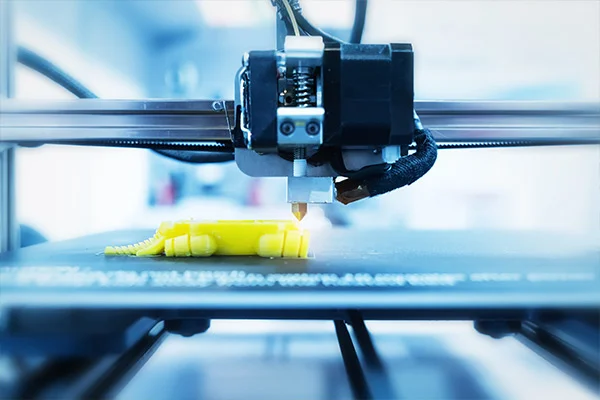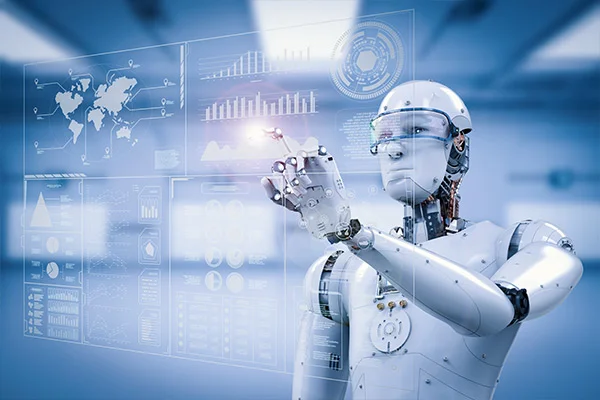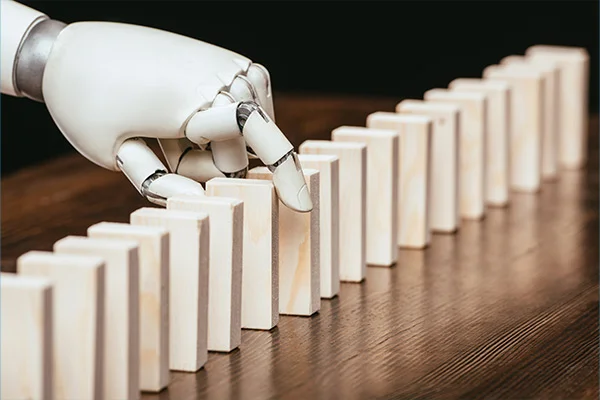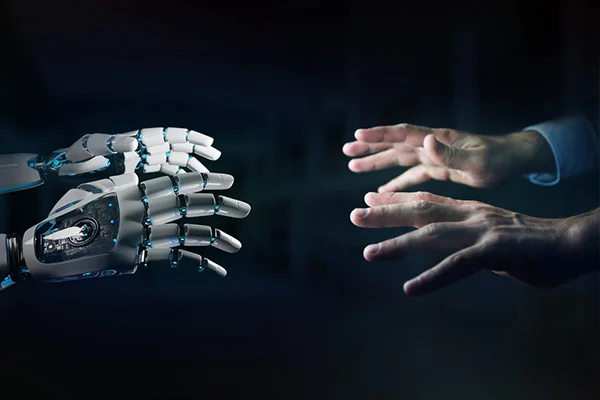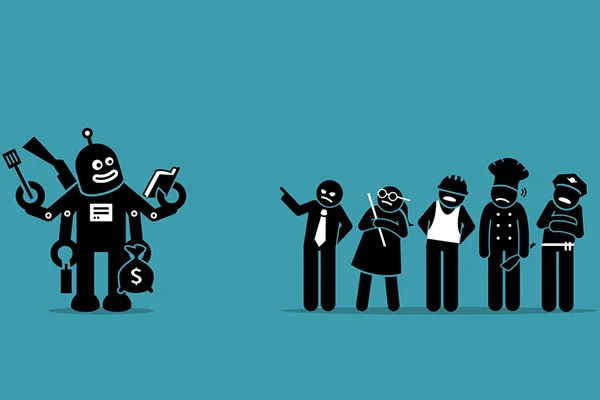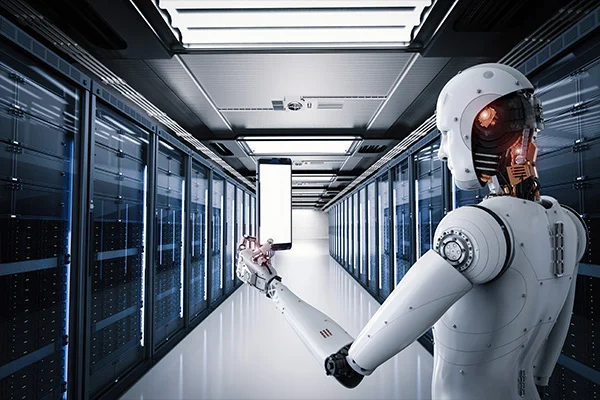How Artificial Intelligence and 3D Printing can collaborate
Artificial Intelligence 3D Printing Machine Learning Applications of AI in 3D printing AI and 3D printing has been a hot tech for sometime and ever since their inception, these two domains has climbed steadfastly on the global market ladder. The 2019-20 global automation market size has displayed this rise. It is obvious that these two domain would cross paths sometime and strike up a beneficial collaboration. The intersection of AI and 3D printing has long been predicted. AI can analyze a 3D model and determine which parts will fail to form the part. 3D printers can also remove material from failed regions and use AI to create a different version. AI can even analyze a part’s geometry and identify a potential problem so an alternative way to create it can be found. The end result? A better-designed part with a high rate of success. Artificial Intelligence The merging of artificial intelligence and 3D printing is an evolution of manufacturing paradigms. Prosthetics design, for instance, is one of the most important applications of 3D printing. As technology advances, artificial intelligence and 3D printers can be used to control 3D printers and increase the number of compatible materials for the process. By combining these two technologies, manufacturers can create new and improved products and production processes. Artificial intelligence and 3D printing will eventually help humans create better prosthetics. The advancement of 3D printing has made it possible to create complex objects without the need for a human. Despite the complexity of the manufacturing process, AI can help to improve the process. The combination of AI and 3D printers will also create new applications. Here are some applications that will benefit from the convergence of these technologies. Once this technology becomes more widespread, it will revolutionize the manufacturing industry. It could even be used to create new prosthetic limbs that can be used for surgery. 3D Printing AI and 3D printing are often associated, but it can also be used to create better products and objects. By automating processes, AI can help eliminate human error and enhance 3D printing performance. The fusion of AI and 3D printing has a number of benefits for manufacturing and quality control. It also helps accelerate the rise of Industry 4.0 and the Industrial Internet of Things. But which use cases will AI have in manufacturing? What are some examples of where AI is already being applied to 3D printing? Machine learning, or AI, is a technology that can analyze a data stream and find hidden relationships. For instance, in the 3D printing process, artificial intelligence helps maintain the material properties of complex alloys, such as titanium, carbon, and other metals. The resulting models can be used for predictive maintenance. Machine learning can even help manufacturers improve spare parts and predict when to replace them. This is an exciting development for manufacturers and researchers alike. Machine Learning Bioprinting, also known as 3D bioprinting, is an emerging field in which machine learning is being used to improve the process of making organoids. This technique involves constructing a scaffold with a specific design to support cell growth and function. The complexity of the scaffold can have a big impact on the printed organ’s function. For this reason, scaffolds should be designed carefully and precisely to optimize the process. Using machine learning in 3-D bioprinting can help detect defects, such as incorrectly positioned cells, curved layers, and microstructure errors. It can also monitor the entire bioprinting process and identify problems before they arise. One such example is shown in Figure 4, which uses CNN to detect defects during the bioprinting process. In this example, images from high-quality cameras during the bioprinting process are input data for the CNN, which analyzes the images to determine whether they are defects. Applications of AI in 3D printing AI has a number of advantages when it comes to 3D printing, including the ability to analyze an object before starting the process, and to predict the quality of the part. The use of machine learning algorithms also improves the fixation process and reduces manufacturing waste. Some projects are even aiming for zero-waste additive manufacturing. AI can also be used to protect important data about the printing process, such as reducing the number of errors. A recent example of an application of machine learning in 3D printing is automated monitoring of 3D printed parts. By integrating image processing and camera data, supervised machine learning algorithms can detect defects during the printing process and help companies fix them without human intervention. The technology can also help companies cut the cost of reprinting parts if they have to fix a problem. Another cost-saving application of artificial intelligence in 3D printing is the guarantee of high- precision prints. A project developed by the University of Southern California has been designed to ensure that parts produced by 3D printing processes meet high-quality standards. The possibilities for AI and 3D printing to collaborate are endless. We’ve seen how they can work together to create a prosthetic hand, and we believe that as these technologies continue to develop, the potential value they can provide each other will only increase.
Read MoreExploring the Potential of Artificial Intelligence in the Pharmaceutical Industry
As marketers and managers know, the challenges and excitement of pharmaceutical product launches are potentially as profitable for companies as they are beneficial for patients. Nonetheless, careful planning and resourcefulness are instrumental in developing a corporate roadmap for new products. Executing a launch well means that a new pharma product is more likely to become a market leader. Below, we discuss how to achieve success through a sophisticated approach involving influence mapping tools. Read on to discover more, including an overview of today’s leading software systems. Armed with this information, your pharmaceutical company can harness the power of Artificial Intelligence or AI in development projects, product launches and sales campaigns. Facing the challenges The different stages in the path from R&D to product launch frequently involve various teams and functions. Although the groups involved often share similar goals, they tend to operate in a degree of isolation. At each stage, experts address a relatively narrow set of challenges related to their immediate responsibilities. Though the best amongst them will endeavor to consider the broader situation wherever possible, there may sometimes be little incentive to do so. In some cases, short-term conflicts can arise. In contrast, the safe development of effective drugs, medicines and appliances is, of course, multidisciplinary. It involves research and collaboration, combining the efforts of multiple departments – sometimes in different countries. Apart from an in-depth knowledge of the disease area concerned, medical professionals within a company need to remain keenly aware of patient care and stakeholder expectations. Achieving this delicate balance requires thoughtfulness, accurate information, well-developed commercial insight and, of course, interpersonal skills. Making informed decisions Remaining competitive requires the linking of clinical results to patient outcomes. For instance, when customer service and support representatives or teams liaise with healthcare providers, they may well uncover unmet patient needs. A cross-functional approach between commercial, clinical and regulatory elements should also research treatment outcomes, hear input from patient’s representatives and communicate with public and investor relations. Maximizing return on investment Remaining competitive requires the linking of clinical results to patient outcomes. For instance, when customer service and support representatives or teams liaise with healthcare providers, they may well uncover unmet patient needs. Similarly, valuable insights might emerge regarding patient’s acceptance of products, revealing untapped market potential and enabling additional clinical programmed to boost ROI. Using software to align teams Nowadays, a choice of feature-rich software packages has made the latest in Artificial Intelligence (AI) available to the world of pharmaceuticals. Now, it is possible to manage information, answer queries and display reports with ease. Such packages typically boast intuitive and user-driven interfaces to acquire and preserve essential details. Also, powerful algorithms search for connections, log the results and analyzeimplicit knowledge such as key stakeholders and their links. Group knowledge becomes implicit by asking brand teams to share data about accounts via influence maps. Later, colleagues and members of other groups can leverage this information in a productive, cross-team approach. Across the pharma manufacturing sector, cross-functional teams can now benefit from granular and accurate account stakeholder maps, updated in real-time. Significantly, team alignment and influence maps allow pharmaceutical companies to get the most from their team’s relationships with each corporate function and – crucially – with stakeholders. Examples of problems and quirks included: Making influence maps work for you An AI based engines will identify Key Opinion Leaders (KOLs) based on the accumulated data. Pharmaceutical companies have used the influence of highly experienced researchers and physicians to seek out more takers of new drugs and clinical trials. Artificial Intelligence can add more value by quantifying their influence and giving back an elaborate measurement to run a better campaign. Pharma companies can implement Machine Learning for allocating right experts for campaign needs via influencer marketing. For this, AI can be fed number of topics, publications, research produced by such experts and understand their audience. So, there you have it. If you are a business decision-maker or policymaker, you now have an exciting opportunity. Deployed to good effect, the latest influence mapping techniques and AI look set to fuel organic business growth in forward-thinking pharma companies.
Read MoreEMOTION AI – A BOON FOR THE FUTURE!
By Pruthviraj Jadhav Abstract Artificial Intelligence is the talk of the tech town. The capabilities that AI can exhibit are breaking all sorts of boundaries. There are intelligent AI projects that can create a realistic image, and then there are ones that bring images to life. Some can mimic voices. The surveillance-based AI can predict the possible turn of events at a working space and even analyze the employees based on their recorded footage. (To learn more about smart surveillance, visit www.inetra.ai) This blog talks about a generation of AI that can identify human behavior and are special ones. We are talking about the Expressions Social and Emotion AI, a recent inductee in the computing literature. The Emotion AI incorporates the AI domains adept in automatic analysis and synthesis of human behavior, primarily focused on human-human and human-machine interactions. A report on “opportunities and implications of AI” by the UK Government Office for Science states, “tasks that are difficult to automate will require social intelligence.” The Oxford Martin Program on the Impacts of Future Technology states, “the next wave of computerization will work on overcoming the engineering bottlenecks pertaining to creative and social intelligence” What is Emotion AI? Detection and evaluation of human emotions with the help of artificial intelligence from sources like video (facial movements, physiological signals), audio (voice emotion AI), text (natural language and sentiments) is Emotion AI. While humans can understand and read emotions more readily than machines, machines can quickly analyze large amounts of data and recognize its relation to stress or anger from voice. Machines can learn from the finite details on human faces that occur too quickly to understand. The Brunswick Lens Model Let’s have a look at Fig. 1 shown below. The person on the left is characterized by an inner state µS that is externalized through observable distal cues. The person on the right perceives these as proximal cues; stimulate the attribution of an inner state µP (the perceptual judgment) to the person on the left. From a technological perspective, the following actions are possible – The Brunswick Lens model is used to compute the human-human and human-machine interactions and their emotional aspects. It is a conceptual model with two states − the inner and outer state. The outer state is easily visible for the observer but not much conclusive. The inner state is not easily understandable but leaves some physical traits (behavior, language, and physiological changes) used to perceive the inner state (not always the correct one). For example, a happy person might shed tears of joy, but another person will consider the former in grief.? These physical traits can be converted into data suitable for computer processing and thus, find their place in AI. In addition to the above, the Brunswik Lens covers another aspect of Emotion AI: the capability to synthesize observable traits that activate the same attribution processes that occur when a human’s traits are displayed when perceived by a human observer. For example, suppose an artificial face displays a fake smile. In that case, humans tend to believe that the machine is happy, even though emotional expression is impossible with artificial entities since they cannot experience it. However, people can understand the difference between humans and machines at a higher level but not at a deeper level where some processes occur outside their consciousness. In other words, a human’s reaction to machines is like how they react to other humans. Therefore, human-human interaction is a prime source of investigation for the development of human-computer interaction. How does Emotion AI work? Emotion AI isn’t limited to voice. It uses the following analysis – Social Media giant ‘Facebook’ introduced the reactions feature to gain insights and data regarding user’s responses to various images. Emotion AI needs user-generated data such as videos or phone calls to evaluate & compare reactions to certain stimuli. Later, such large quantities of data can be morphed into human Emotion and behavioral recognizing patterns using machine learning. It can leverage more in detail emotional reactions users have with the help of the high computational capability of machines. Oliver API Oliver is an Application Programming Interface, also known as Oliver API, a set of programming frameworks to introduce Emotion AI in computer applications. Oliver API permits real-time and batch audio processing and has a wide array of various emotional and behavioral metrics. It can support large applications and comes with easy documentation. SDK is supported in various languages (javascript, python, java) and examples to help programmers understand its operation quickly. The Oliver API Emotion AI can evaluate different modalities through which humans express emotions, such as voice tone, choice of words, engagement, accent. This data can be processed to produce responses and reactions to mimic empathy. The sole aim of Emotion AI is to provide users a human-like interaction. Industry predictions – Applications – Medical diagnosis – In certain diseases which need an understanding of emotions like depression and dementia, voice analysis software can be beneficial.Education – Emotion AI-adapted education software with capabilities to understand a kid’s emotions and frustration levels will help change the complexity of tasks accordingly.Employee safety – Since employee safety solutions and their demands are on the rise, Emotion AI can aid in analyzing stress and anxiety levels.Health care – Emotion AI-enabled bot will help remind older patients about their medications and monitor their everyday well-being.Car safety – With the help of computer vision, the driver’s emotional state can be analyzed to generate alerts for safety and protection.The autonomous car, fraud detection, retail marketing, and many more. Conclusion – Emotions are a giveaway of who we are at any given moment. It impacts all facets of our intelligence and behavior at the individual and group levels. Emotion AI helps in understanding people and offers a new perspective to redefine traditional processes and products. In the coming future, it will boost up businesses and be a beneficial tool in medical, automobile, safety, and marketing domains. Thus, decoding emotions – the fundamental quality
Read MoreAI-ML Intelligence and Learning
The emergence of Artificial Intelligence in recent years has shifted the dynamic of technology’s interaction and implementation in a way seldom seen. The fact that machines can think, analyze and operate like humans have been raising eyebrows since its inception. Artificial Intelligence, Machine Learning is deemed to be the most sought after field and career option in the coming decades. But what is so captivating about AI ML? What is it that sparked fears of AI ML taking over human labor? Inarguably, it is the essential attribute of AI – Intelligence and Learning. Intelligence Humans are the only species in the world whose intelligent quotient surpasses any other species by a wide margin. Whether due to evolution or otherworldly miracles, it is safe to say that humans stand at the top of the food chain and dominate the ecosystem like no other. This dominance can be credited to human intelligence. Although there is no definite description for intelligence, one of the greatest scientists of the 21st century, Stephen Hawking famously quoted, “Intelligence is the ability to adapt to change.” Intelligence can be thought of as an ability to acquire and apply knowledge or skills. The broad spectrum of intelligence covers abilities like understanding, logic, self-awareness, emotional experience, reasoning, planning, critical thinking and problem-solving. Although some of these abilities are found in every other animal species out there, humans surpass them by a long shot. So what is it that humans do differently and better than others. Here are a few examples: Learning Learning is an essential factor in the field of evolution. Without learning capability, humans would not make it this far. Most of the animal species have a distinct learning curve, which helped them overcome adversities and evolve accordingly. Learning is a process that causes “change” as a result of acquiring new or modifying existing knowledge, behaviors, skills, values, or preferences. Learning is very much intertwined with intelligence. Learning is an application of intelligence itself. Putting it simply, intelligence is the stirs the pot while learning is the taste of it and understanding what needs to be done. Here is how intelligence and learning interact with each other: Learning encompasses the following methodologies: Learning facilitates the prediction of data based on the understanding of the model and gathering actual observations. These observations are compared with the predicted outcomes to differentiate between the two sets. Approach to AI ML through Intelligence and Learning The conventional method of problem-solving through intelligence and learning covered a one-time pre-defined rigid model which, when running through the application, yields a definite result that couldn’t be processed any further. Such a method consists of strict one-way inputs which are mostly theoretical. This approach negates the learning process and presents a limited scope for refinement. The conventional means of that takes a lot of time and once completed, it can be considered done and dusted. The AI ML approach, however, takes a more flexible route as it enables the extraction of information from time to time, understanding the essence of information, and refine or adjust a model as per the findings. Such a method consists of various environmental inputs that might vary from time to time to draw several conclusions. The results are extracted to pull the absolute intrinsic or indispensable quality of something, which determines its character. AI ML approach to problem-solving facilitates adjustment of the model in accordance with its character to further run it through application again. Although AI ML has imitated human intelligence and learning capability to a reasonable extent, the game is far from over. Humans being complex creatures has a wide range of intelligence, namely Logical-mathematical, existential, interpersonal, linguistic, bodily-kinesthetic etc. Humans can also derive the meaning of cosmic entities far from the reach of an AI machine for now. It remains to be seen how far AI ML will go considering this is just the start.
Read MoreAI-ML Engineering Problems
Artificial Intelligence (AI), Machine Learning, and Deep Learning have been extensively used for more than a decade but largely remained confined to areas such as voice recognition, image reconstruction, image/signal processing, and output prediction. Such algorithms have seen limited usage in engineering domains such as thermal management, electronics cooling industries, fluid dynamics prediction inside the engine or over a bonnet, aerodynamics, and fluid dynamics problems across an aero-foil or turbine engine. The delicate relation between AI ML and engineering can be better explained with two specific terms – A priori knowledge and posteriori knowledge. Since the time of Emmanual Kent, western philosophy has defined A priori knowledge as something which is attained from reason and independent of particular experiences. On the contrary, posteriori knowledge is derived from real evidence that has to be considered authentic. It means A priori knowledge is not circumstance-centric but instead follows a set of pretty universal rules. Fundamental concepts of thermodynamics, electromagnetism, mechanical, and material properties are highly quantitative. They stick to a predetermined route rather than a vast stock of different scenarios. Engineering Problems Requirements Every problem related to engineering emphasizes the below-mentioned parameters: High Accuracy Levels – Every endeavor starts with a model in the early stages. The model undergoes various physical applications and virtual simulations. It is done to gather all sorts of data to determine the proposed workability of the model and improvise areas. The model goes through several stages of scrutiny until high accuracy levels are achieved. AI ML works more on input feeding, and the outputs fluctuate every given time. Function Over Feel – Engineering problems ask for the accurately intended functionality of a model. Feel of the component is never the priority. Every process applied to a model at every stage makes sure the intended functioning is obtained. As mentioned before, it is more linear. On the other hand, AI ML targets more on the feel, which varies with different situations. High Repeatability and Predictability – An engineering task involves a high repetition of activities and the desired outcome is already known. One cannot simply predict an AI ML output, and as a result, for a conventional model in engineering, AI ML is not suitable. However, recent years have witnessed increased usage of AI ML in the engineering sector, which is attributed to the following change in trends: Application of AI ML in Engineering Problems Although Artificial Intelligence has found its niche in the engineering sector, it is extensively found in four areas of operation, which have a massive importance in today’s market. Generative Design As the related data are available for every product released in the market, we have a readily available vast database to quickly conjure up past information and generate engineering data out of it. This makes the task more streamlined, so we can understand product requirements, highlight the recurrence of similar conditions in the past, and pull out past data that have previously catered to the same. This minimizes the time required to draw out an elaborate plan from scratch. If a problem is repetitive, it can be solved with the help of past data. This helps to intend to multiple issues simultaneously. Failure Analysis Failure Analysis is the collection of data and analysis to obtain the cause of a failure. Failure analysis is essential as it helps pinpoint the causes, reasons behind causes and pave a way to determine corrective actions or liabilities. A massive set of failure analysis records is fed to AI ML, which comes in handy during similar failures. AI ML can assess the loss and come back with valuable information, should the incident occurred in the past. Once again, it reduces detailed investigation and time. Digital Twins A significant aspect of AI, while digital twin has been around circa 2002, credit goes to the Internet of Things (IoT) for making it cost-effective to implement. It was named one of the top 10 technology trends for 2017, considering it is imperative to business. The digital twin is a virtual, digital replica of a real-world entity or process. The intelligent components are integrated into a physical element to gather data such as working conditions, position, and process changes. The compiled data is collected, synthesized, and integrated into a virtual model and AI algorithms. Such data assets can be created even before the physical model is built. Applying analytics into these virtual models can give back relevant insights about the real-world asset. The best part of the digital twin is that once the physical and the virtual models are integrated, the virtual model can sync with the actual model. Digital Inspection The digital inspection involves collecting information and analysis of products on production to ensure quality control. The operation of digital inspection has gained considerable momentum in engineering, especially in the manufacturing sector. Unlike paper inspections which could have been laced with occasional errors, digital inspection minimizes or completely obliterates the chances of mistakes. AI ML has made its way to production and manufacturing, consequently providing automation that is faster, cost-effective, and superior to human involvement. AI-infused digital inspections build intelligent systems that perform quality checks down to the finest of details, leaving no stones unturned. The rise of artificial intelligence has allowed automated machines to develop complicated manufacturing and design operations. AI has found significant importance in: The end goal is to introduce machines capable of learning, exploring, probing, and improving without human intervention. AI ML and Big Data are climbing the ladders of engineering with pace. An interesting point to bring up is that in our pursuit of creating supreme AIs, we are unwrapping information about how human brains perceive & operate and how we address the learning process, both consciously and unconsciously.
Read MoreAutomation vs. Future Job Market: How Will It Unfold
Automation is here to stay An automated warehouse in Hong Kong that runs 24/7 uses a swarm of robots driven by AI to help deliver groceries. Known as Autonomous Mobile Robots, or AMR, they operate on a tailored track laden with QR codes to track their movements. The data they collect aids in improving their efficiency over time. The more the robots work, the smarter they become. AI has helped meet modern consumers’ demands for fast delivery. The current Covid-19 pandemic has increased markets for automated logistics. Big players in e-commerce like Amazon and Alibaba already have a horde of AI-powered robots relentlessly doing their bidding. These Robots and computerized systems running them are subsets of a much bigger field of study: Artificial Intelligence. Automation is here to stay and thrive. There is no going back from a technology that is on a mission to transform how we interact with our daily tasks. Automation is everywhere, From warehouses to factories, from mobile phones to customer support, from cab services to transportation. You name a field, and Automation is already prevailing in it. Tesla and SpaceX CEO Elon Musk claimed that AI will be smarter than humans and will overtake by 2025. Although it sounds a bit exaggerated, the rate at which AI and Automation are galloping towards the future, such predictions are entirely dismissible. However, Elon Musk also described AI as an existential threat. There have been growing concerns about AI taking over human jobs. Is it a grave threat, or is it fear-mongering? As per a leading consulting firm, one in three US employees will hand over jobs to Artificial Intelligence by 2030. How Automation is affecting various industries Automation is a derivative of great industrial revolutions that changed the production and commodity landscape. There are four industrial revolutions, the current one being the fourth industrial revolution, also known as Industry 4.0 (To read more about Industry 4.0, refer to Introduction to Industry 4.0). Coming back to Automation and its effect on industries, it is safe to say that some sectors will be receiving a more significant impact than others. Let us have a quick look at such industries ready to embrace the automation juggernaut. Manufacturing: Probably the biggest receiver of change when it comes to Automation, the manufacturing industry is a fast-evolving domain that needs rapid advancements in Automation. Intelligent machines and robots have been in use in this industry for a decade already. The need for Automation in manufacturing is to enable error-proof operation, consistent production, negligible downtime, fewer human factors, and constant pace. In a world where consumer demand is growing, one must be super-efficient to meet those demands by supplying products to the market continuously. Transportation: Transportation is one of the first industries to be affected by the automation wave. Airplanes have already been using autopilots for decades. Self-driving cars are being increasingly tested and deployed on the road. Couple that with the Internet-of-Things (IoT), and we have a robust system of intelligent vehicles. Agriculture: With the world population touching 8 billion by the end of this decade, there is a dire necessity of producing the optimum amount of food to feed the people. As a result, the agricultural sector needs increased attention regarding automating food production, distribution, and supply. Logistics: As mentioned earlier in this blog, top companies like Amazon and Alibaba have upgraded logistics at the consumer level by employing robots, placing AI technologies to manage warehouses and delivery departments. Healthcare and Pharmaceuticals: With the advent of nanotechnology, robotics, and IoT, the healthcare and pharma sector has climbed the ladder and introduced some groundbreaking medical treatments. The field of gene research and genetic altering system employs nanobots to carry out tasks. Customer Relations: Remember when you enter a website, and a pop-up generates, eager to lend you support? Or how about when you have a complaint, and you interact with a customer care executive? Well, they are most likely chatbots with curated responses to address your queries and grievances. Many retail outlets in advanced nations are adopting cashier-less automated transaction desks. Automation will end with repetitive work, and it has started shaping future jobs. It is likely that soon a lot of the current jobs will no longer exist. It is even predicted that jobs like plumbers, car mechanics, barbers, and funeral directors are likely to be replaced by automated appliances, robots, and computers. Will Automation Take Over Jobs, Or Will It Improve Them? As seen from the thriving tech sector, there is no immediate threat to jobs with AI, but a more radical use of technology could destroy employment opportunities for millions. Automation has been around since the late 1800s, but with the rise of the digital revolution, we see it gain momentum and be applied to a wide range of sectors and services. We are already witnessing Automation and the use of robots taking over repetitive and mundane processes like manufacturing and sending information to factory floors. In the transport sector, most of the workforce is being replaced by technology. The financial industry has also begun losing jobs to computers as these can perform most of the jobs that have to be done. Eventually, it may result in a world full of unemployed people and loads of robots and intelligent systems. Yes, all those possibilities could turn out to be true. There are big movie franchises that show why this is not a good idea. According to a 2013 study on the probability of automated jobs predicted that bank workers, transportation and logistics workers, and clerical and administrative workers – many middle-class jobs – were at risk of being replaced by technology. But is that fear-mongering genuine? While Automation will indeed displace many jobs over the next 10 to 15 years, it won’t eliminate human employees at all but rather modify the job landscape by introducing new work opportunities. Rather than eliminating the drudgery of repetitive tasks, Automation will place people in control of an entirely different set of operations.
Read MoreBrief history of Artificial Intelligence (AI)
In November 2014, E-commerce giant Amazon announced the launch of Alexa, a voice-controlled virtual assistant whose task is to transform words into action. It caught the attention of tech enthusiasts and the general populace alike. The inclusion of Samuel L. Jackson’s voice in Alexa was the talk of the tech town. Recent years have witnessed a climactic change in the way technology interacts with humans. Alexa happens to be just that one card out of the deck. From Tesla’s cybertruck to internet giant Facebook’s Edge Rank and Google’s PageRank has called for both awe and a little bit of commotion within the tech community. The driving force behind such innovations can be put under a single umbrella term — Artificial Intelligence or AI. Artificial intelligence (AI) can be defined as — the simulation of human intelligence in machines, especially computer systems and robotics. The machines are programmed to think and mimic human actions such as learning, identifying, and problem-solving. Although AI has burst into the scene nowadays, the history of AI goes way before the term was first coined. It is safe to say that the principle is derived from the Automata theory and found references in many storybooks and novels. Early ideas about thinking machines emerged in the late 1940s to ’50s by the likes of Alan Turing or Von Neumann. Alan Turing famously created the imitation game,now called the Turing Test. After initial enthusiasm and funding on machine intelligence until the early 1960s,entered a decade of silence. It was the period of reduced interest and funding on research and development of AI. This period of decline is known as ‘AI Winter.’ Commercial ventures and financial assistance dried up and AI was put on hibernation for the said period. The late 1970s witnessed a renewed interest in AI. American machine learning pioneer Paul Werbos devised the process of training artificial neural networks through backpropagation of errors. In simple terms — Back Propagation is a learning algorithm for training multi-layer perceptrons, also known as Artificial Neural Networks. The neural networks consist of a set of algorithms that loosely mimics a human brain. It means much like a human brain; it is designed to interpret sensory data, cluster raw inputs, and classify them accordingly. 1986 saw the backpropagation gaining widespread recognition through the efforts of David E. Rumelhart, Geoffrey E. Hinton, Ronald J. Williams. In 1993, Wan became the first person to win the international pattern recognition contest with the help of the backpropagation process. Since the emergence of computers and artificial intelligence, computer scientists have drawn parallels between these intelligent machines and human minds. The comparison reached a pinnacle when, in 1997, an information technology company, IBM, created a computer known as Deep Blue to participate in a chess match with renowned chess master Gary Kasparov. The match went on for several days and received massive media coverage. After a six-game match, Gary Kasparov secured a win, Deep Blue secured two wins and rest three draws. The highlight of the spectacle, however, was the ability of machines to push forward the boundaries and lay down a new benchmark for computers. Deep Blue made an impact on computing in many different industries. It enabled computer scientists to explore and develop ways to design a computer to tackle complex human problems with the help of deep knowledge to analyze a higher number of possible outcomes. The rise in popularity of social media with Facebook saw the implementation of AI/ML in a wide array of applications. One prominent characteristic was the use of DeepFace. As the name suggests, DeepFace is a deep learning facial recognition system designed to identify human faces in digital images. DeepFace was trained on four million images uploaded by Facebook users and is said to reach an accuracy of 97%. Not so long after, NVIDIA launched Generative Adversarial Network (GAN), which is a class of machine learning designed to generate new data with the same inputs provided. The portraits created by GAN is so realistic that a human eye can be fooled into thinking it as a real snapshot of a person. GAN has seen widespread usage in the creation of celebrity faces. Google’s popular doodles are an outcome of the GAN system. The advent and rise of AI, however, has generated quite of bit of negative speculations as well, owing to recent developments in the said field. Some key concerns are as follows: While there are certainly lots of speculations for AI, we expect that the next AI winter would not come. Another AI winter is possible if we repeat the past circumstances. As for now, AI is becoming a part of our daily lives. It is in our cars, phones, and other technologies we use on a day-to-day basis. It is common to interact with AI regularly, whether it is a helping chatbot, personalized ad or better movie show/TV suggestions. AI is too much integrated into our lives and only time will tell where it heads.
Read More